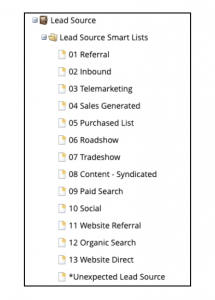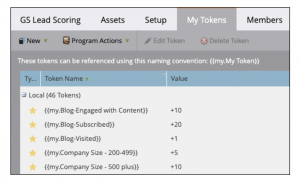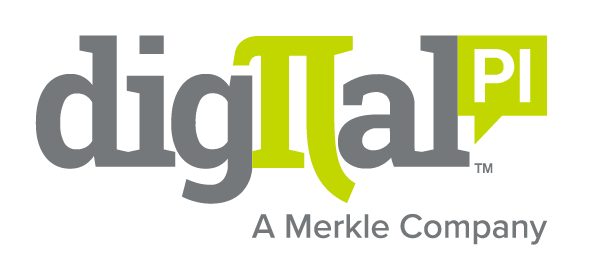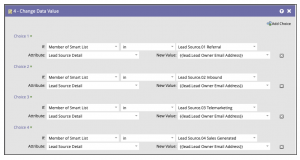During a MAP migration, it’s very easy to focus only on the templates, programs, landing pages, and emails that need to be migrated into your new Marketo instance. It’s also easy to take an approach of “we’ve always done it this way” or “let’s just get this stuff moved over.” However, migration is a perfect time to evaluate your current processes and consider optimizing them. One way to accomplish this is to shift to a global program strategy.
A global program strategy ensures that data is set in a consistent manner and also provides scalability if future program changes are necessary. We recommend setting Lead Source and Lead Scores within global programs.
Go Global
Global programs are operational and run in the background. They are standalone programs and remove the need to add specific flow steps in every single program. With this global approach, the programs can be built out once, in one easy-to-find place. We commonly see data points, such as person source or lead scores being set within a flow step at the individual program level. This approach leaves room for error – flow steps might be missed in individual programs (especially if multiple team members are building out programs) or the data point might get overlooked entirely if there isn’t a tracking program built to capture it.
Global Sourcing Program
As a marketer, you are tasked with generating new leads for your sales team. You might be asked, “where are these new leads coming from?” or “how do our paid social efforts compare to organic social?” Setting Person Source and Source Detail can help you when you answer these questions.
Person Source
Person Source is the origin of a new record in your database and tells you how the person entered your database. It should only be set once at the time the person is created in Marketo and should NOT be overwritten.

We recommend creating a standardized list of values that can be set for person source, for most companies this is usually between 12 – 15. The values set for person source shouldd map to marketing tactics used by your marketing team. For example, if Tradeshows, Paid Social and Paid Search are used by marketing for lead generation, then these tactics should align to your source values.
Source Details
Source Details provide more specific detail about the source that created the lead. For example, knowing that a lead was generated at a tradeshow may not be enough. You’ll most likely want to know which tradeshow the lead attended. The Source Detail field compliments Person Source and provides those specifics. “2020 Adobe Marketing Summit” is an example Source Detail for a tradeshow (the name of the tradeshow that the lead attended).
Global Scoring Program
Using a global scoring program ensures that scores are applied consistently and ensures that the data points that you’d like to score on aren’t being overlooked. The scores you assign for behaviors and demographics should be adjusted and dialed-in based on your improved actionable reporting. Having flow steps that set scores throughout your instance makes this difficult to do. If you want to change the score for “attended event” where do you go to do that? How likely are you to miss a flow step or two? Having one program in a single location makes this much easier to do!
Scoring is a way to measure a person’s buying intent. The higher a person’s score, the more likely they are to purchase your product or service. A common misconception is that scoring is only comprised of the person score, it is actually comprised of three elements.
Person Score = Demographic Score + Behavior Score
The Demographic Score gauges a lead’s fit and the Behavior Score gauges the actions that a lead has taken. The overall person score helps you better understand when a person is ready to be passed along to your sales team or is a Marketing Qualified Lead (MQL).
Scoring works best when a standardized scale is used. We recommend using a scale of zero to 100. By standardizing the scores, you are able to compare leads using the same benchmark. A score of 85 is better than a score of 40.

Once you have your global programs implemented, it is important to monitor them on a regular basis. They may need to be adjusted as your business needs change. For example, you may find that new leads are entering your database from a source that wasn’t originally configured in your source program, or you may receive feedback from your sales team that leads are reaching MQL status before they are truly sales-ready.
With the scalability of global programs, these adjustments are easy to make. Your new lead source can be added in one program vs. many, and a quick update to your My Token score value can help you quickly adjust score values.



